Canon IXUS 130 Review
Canon IXUS 130
Canon's pocket-sized IXUS snapshot is sleek, stylish and has curves in all the right places. But has it achieved the correct balance between form and function?

Verdict
Key Specifications
- Review Price: £128.99
Pocket sized digital snapshot cameras, which in a nutshell describes Canon’s IXUS 130, are two-a-penny, so what makes this slim-line offering different? Well, for starters it is blessed with the same high-fashion looks that have come to embody the IXUS range, so that particular box is ticked.
Also very appealing is its price; at a current cost online of around £120 (a whopping drop down from its manufacturer’s original asking price of £279) it won’t cause a serious dent in your bank balance, even if its width and height are almost an exact match for a credit card. In these respects, it goes up against the likes of the Nikon Coolpix S5100 and, for sleekness, the Sony Cyber-shot DSC-T99.
Weighing just 133g with card and battery inserted it slips unobtrusively into the pocket of your jeans. As we’d expect of the IXUS range, which has always majored on style as much as features, the build quality is high and, as you’d expect, it comes in a choice of several body colours; silver, black, orange and pink. It may be small but it’s sturdy when held in the palm. 
Although you wouldn’t deliberately drop or bash it, this metal-bodied IXUS feels like it could withstand the punishment of daily use, when most cameras around the £100+ mark feel distinctly plastic-y by comparison. If underwater photography takes your fancy, the WP-DC37 casing is available, though at just shy of £200 you may be better off buying a dedicated underwater/rugged compact.
Save for the lack of a touch screen and 3D shooting ability, the IXUS 130 would appear to incorporate most of the latest must haves. 14.1 megapixels are packed onto a relatively small 1/2.3-inch sensor and, while a 4x optical zoom lens equivalent to 28 – 112mm, is hardly in super zoom territory, it provides a very useful focal length range for everyday photography.
Other Canon regulars such as a swift response Digic 4 processor, blur-reducing optical image stabiliser and subject recognising (and setting optimising) Smart Auto with Scene Detection technology are also on board. Here the camera chooses from 22 presets to allow for pure point and shoot operation with minimal fuss. The camera’s i-Contrast option can also be used to even out bring out detail in high contrast exposures, though in practice its results aren’t that pronounced.
Subject tracking, a function now commonplace among digital compacts, additionally features, attempting to maintain correct focus and exposure for a moving subject. The optical image stabiliser helps to counteract any external hand wobble and resulting camera shake while Motion Detection Technology will auto adjust ISO to further aid blur-reduction. Rounding off the picture are face detection and automatic red eye detection and correction, the former possessing the ability to recognise up to a frankly ridiculous 35 faces in the same frame and to trigger the camera’s shutter with a smile or a wink – useful for self portraiture.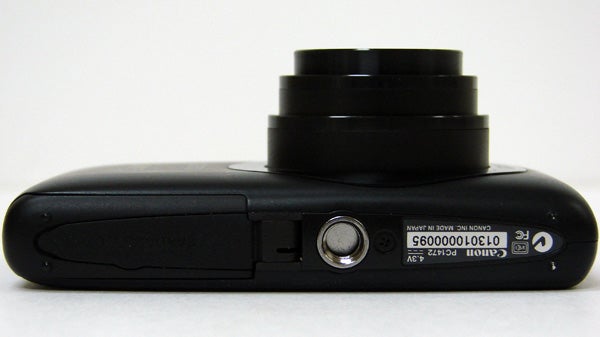
It seems therefore Canon has packed more than you’d necessarily realise into the IXUS 130’s diminutive frame. About the only thing we might hope for that’s missing is options for completely manual shot taking. No matter how diminutive and consumer-oriented a camera, it’s always nice to have the option.
Design wise, the curved edges, slender 17.8mm depth (making it the slimmest IXUS to date) plus sleek matt black finish of our review sample seem to suggest something special, even though, in combination, these elements actually make it very hard to get a firm grip on the camera. It feels as smooth as a beach pebble. A classic case of style edging ahead of substance perhaps, but we’d be fools to suggest a camera’s looks don’t heavily influence a purchase decision, and often count for more than mere words in a review.
Announced at the same time as the IXUS 105 and sharing many features, like that model the control layout is straightforward but unobtrusively implemented. Photos and video clips are composed and reviewed via its 2.7-inch, 270,000 pixel, LCD in the predictable absence of an optical viewfinder, which seems to work perfectly adequately under a range of lighting conditions. To maintain a minimalist appearance function buttons are mostly set level with the IXUS 130’s body, save for the narrow rocker switch for the zoom on the top plate which stands just proud enough to enable fingertip operation. 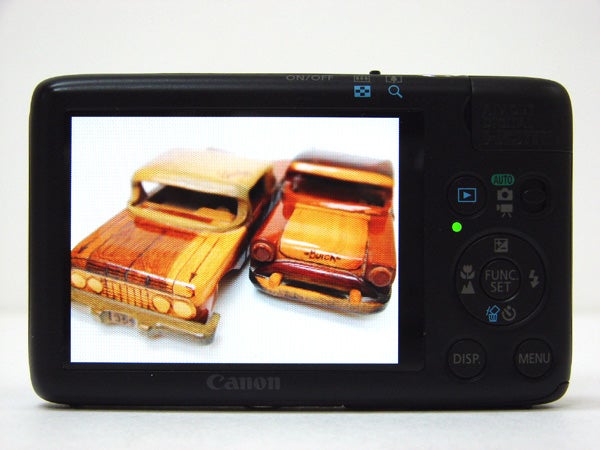
Also slightly raised is the slider switch for alternating between the three shooting modes at the back: auto, plus program or video recording. The latter comes in High Def 1280×720 flavour and uses the stereo inbuilt microphone – no external mic option is available, unsurprisingly. While hardly class leading it’s an improvement over the 105’s standard def 640×480 pixels.
Pressing the ‘Func set’ button in program mode provides access to a plethora of image adjusting options presented on a toolbar down the left hand side of the screen; in auto mode you’re limited to changing image recording size and compression level and that’s it. The expanded toolbar allows for manual adjustment of white balance, ISO light sensitivity (here up to a modest ISO1600), Canon’s ‘My Colours’ picture settings (vivid or neutral plus extended variants), drive mode (single shot or continuous burst) plus metering options (evaluative, centre weighted average, or spot). Furthermore, this toolbar allows users to drill down into alternative shooting mode options, such as optimised scene settings for portraits, kids and pets and the ilk, plus dedicated low light mode (with attendant pixel drop to three megapixels to limit image noise), various colour accent options and digital filter effects – more on which later.
It would have been even more helpful to have had a dedicated video record button presented somewhere on the IXUS 130’s body, thus enabling recording to commence whichever mode had alternatively been selected at the time. But for the price (and size) again we really can’t grumble too much about this omission.
A surprise here is finding an HDMI connection port (is this really likely to be more useful than a dedicated video button?) on the IXUS 130’s small frame hidden under a plastic flap at the top right hand corner of its backplate for hooking the camera up to a flat panel TV. Less unexpectedly, the requisite lead is an optional extra, though cables for the standard AV out and USB 2.0 ports are provided. You also get a wrist strap along with a mains battery charger and plug.
A press of the tiny on/off button on its top plate and the Canon IXUS 130 powers up in around a second, which is swift for its class. The lens barrel extends from its retracted position flush with the body to maximum wide angle setting and the rear screen blinking into life with a cute chirping noise.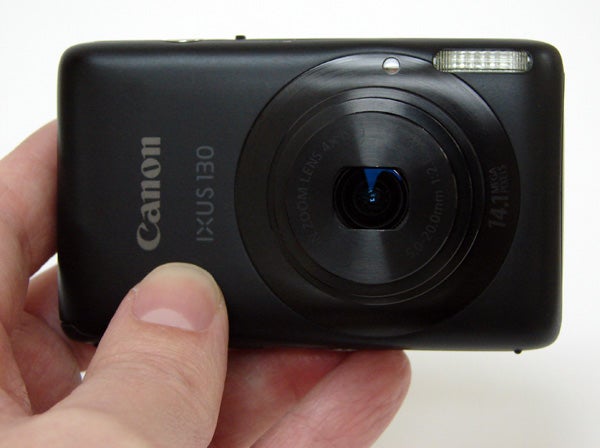
A half press of the shutter release button and the IXUS determines focus near instantaneously, AF point/s highlighted in green accompanied by a beep of affirmation that you’re good to go ahead and take the shot. Squeeze the shutter release button fully and with hardly any lag the camera takes two to three seconds to write a highest quality JPEG to the inserted media card, the screen blacking out briefly before coming to life once more and freezing to display the frozen image for a second or two. Whilst not the quickest ever, these timings are pretty standard for its class.
With no internal memory on offer, the writing of images is to SD media, the camera being compatible with all current formats including the high capacity SDXC. Access to the slot can be gained via a door at the base of the camera where we also find the wafer-thin rechargeable lithium ion battery. A slide of the thumb opens or closes it.
We were pleased that Canon had found room to squeeze in a couple of digital filter effects on the IXUS 130, including its effective miniature mode that narrows the band of focus to give the Lilliputian illusion that full size subjects are actually on a toy-town scale. This option also seems to boost colour saturation at the same time to almost pop art-like levels, making subjects appear even more toy-like. Fish eye is also on hand for those who want to bend and twist their subjects out of shape for creative gain. 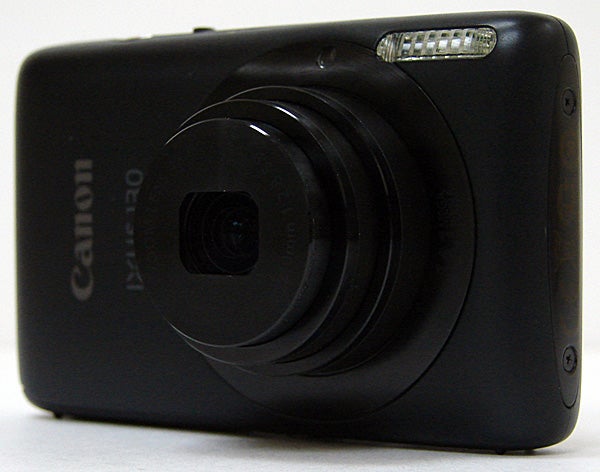
In terms of low light shooting, when switching off the built-in flash and utilising available light we were pleasantly surprised by the camera’s performance over and above ISO400, with noise not really creeping in until ISO800 and then only very subtly. At ISO1600 we are beginning to lose definition across the image, but unlike on even cheaper compacts, the result still resembles a photograph rather than a watercolour painting, and thus, we felt this was a setting we might find ourselves reaching for if push came to shove.
Undoubtedly a snapshot model like this performs well when there’s plenty of light available. Unfortunately our test period was blighted by grey featureless winter skies. Even so, the IXUS 130 delivered a consistent performance, pulling detail out of the drab. Ultimately we’d have preferred a broader focal range than the modest 4x optical zoom afforded, but then again, this has to be placed in context. This IXUS is about style as much as image quality, and that being said we didn’t feel image quality came a poor second here. Slightly disappointing however was that the optical zoom cannot be accessed when recording video, doubtless to avoid the microphone picking up its mechanical buzz when making adjustments. A digital alternative kicks in instead when the zoom lever is nudged.
”’Verdict”’
Its build quality and finish transcend the Canon IXUS 130’s current bargain street price, meaning that anyone who gets their hands on it is more likely to reach for their wallet than hand it back to the shop assistant. That diminutive nature does mean that those with larger hands may actually find it too petite for comfort but otherwise it’s an impressive feat of engineering.
Along the same lines, this is most definitely a point and shoot camera, rather than one for the enthusiasts. Nevertheless, it produces more than acceptable results and is diverse enough for most everyday social photography. Indeed serves to show just how far phone cameras have to come before they’re truly a viable alternative.
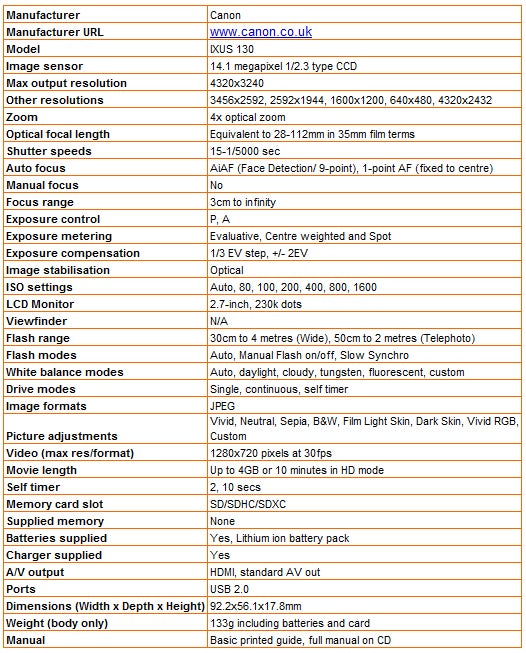
”Over the next few pages we show a range of test shots. On this page the full size image at the minimum and maximum ISO settings have been reduced to let you see the full image, and a series of full resolution crops have taken from original images at a range of ISO settings to show the overall image quality. These pictures were taken indoors using reflected natural light. ”
—-
This is the full frame at minimum ISO.
—-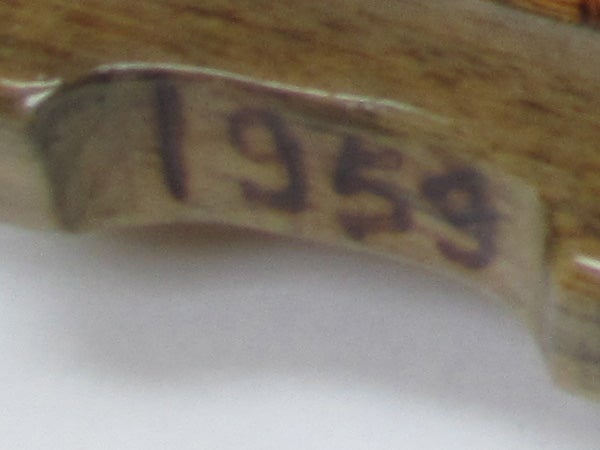
At ISO80 – starting lower than most compacts – and, as expected, all is well with the IXUS 130’s performance
—-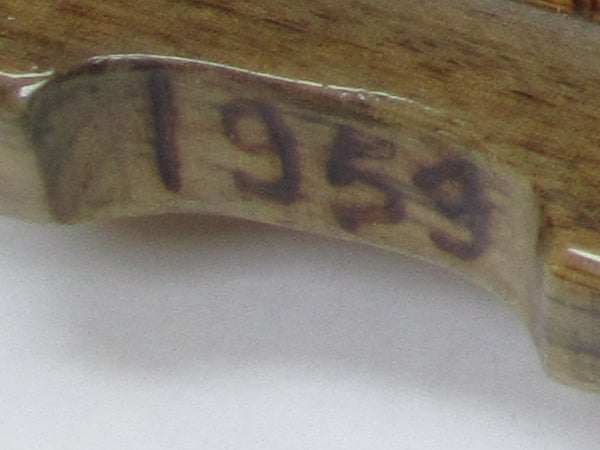
Same shot at ISO100 and no discernible difference
—-
Same lack of noise to report at ISO200, so the camera is performing as predicted
—-
We’re at ISO400, usually the setting at which noise begins to creep in on cheaper compacts. Here we’re just starting to lose definition in the shadow areas, but it is very slight
—-
Noise is becoming more pronounced when examining shadow detail at ISO800, but overall the image is still fairly clean
—-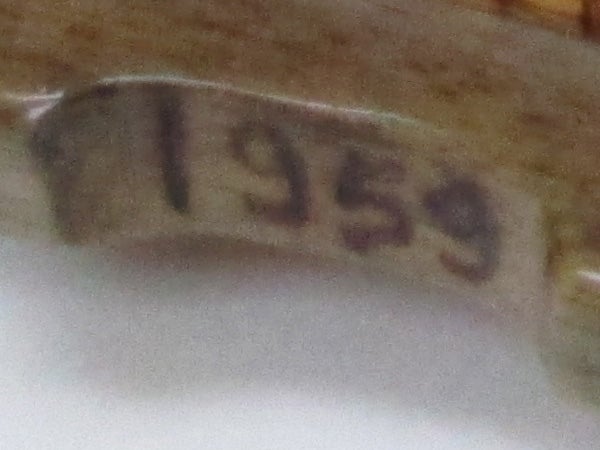
Noise is spreading out at ISO1600 and the image is generally softer. But this option has still provided a perfectly usable result, suggesting Canon was being conservative in stopping here
—-
This is the full frame at maximum ISO.
—-
…And so we’ve tried shooting our test image with Low Light mode selected, which effects an image drop to three megapixels. Here the camera has itself chosen a setting which equates to ISO500, so again, no apparent noise.
”A more general selection of test shots are revealed on this page and next to act as an evaluation of the IXUS 130 in a variety of shooting conditions.”
—-
This wide angle shot straight from the camera reveals a good grasp of detail centre of the frame, getting progressively softer toward the corners. Some quite alarming pixel fringing is noticeable on the upper tree branches, if only on close inspection.
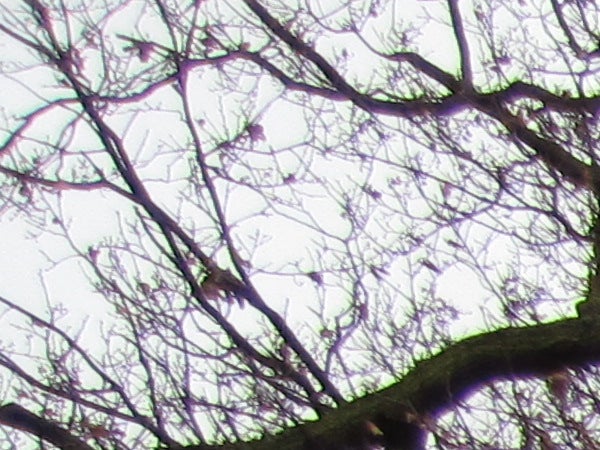
”’Full res crop”’
—-
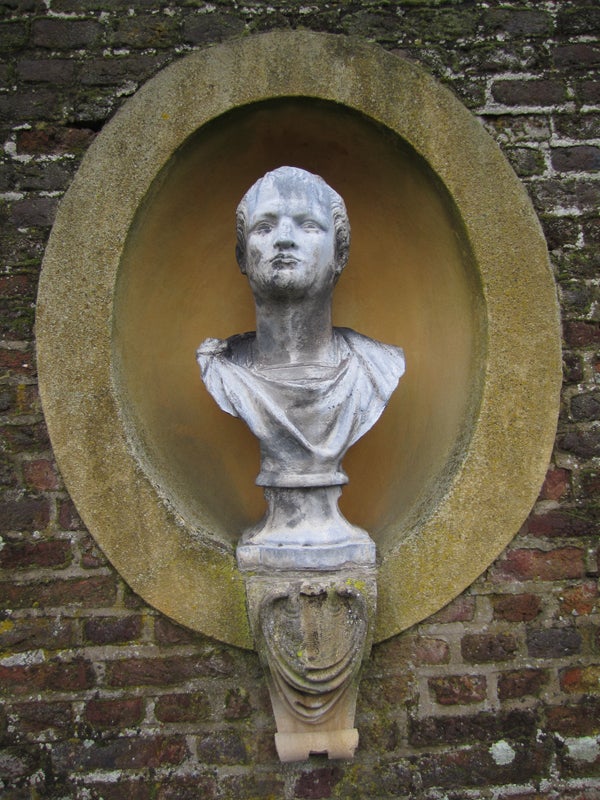
Again, plenty of detail centre of frame with this portrait image, and not a bad level of definition visible in the surrounding brick work either.

”’Full res crop”’
—-
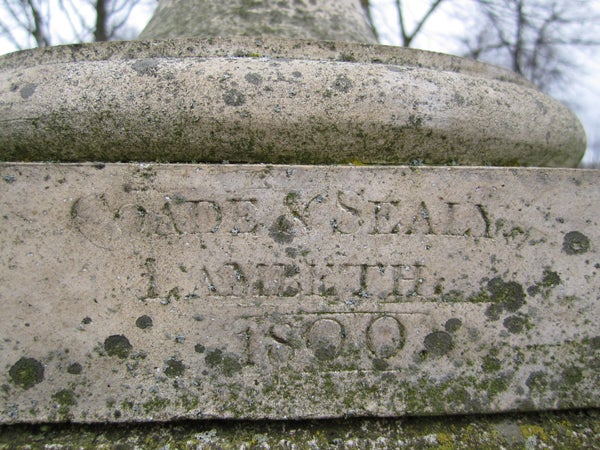
This close up shot again reveals a better level of detail than one would normally expect from a point and shoot in this price bracket – clearly picking out the lettering from amidst the moss on this plinth – if, again, we’re losing definition towards edge of frame.
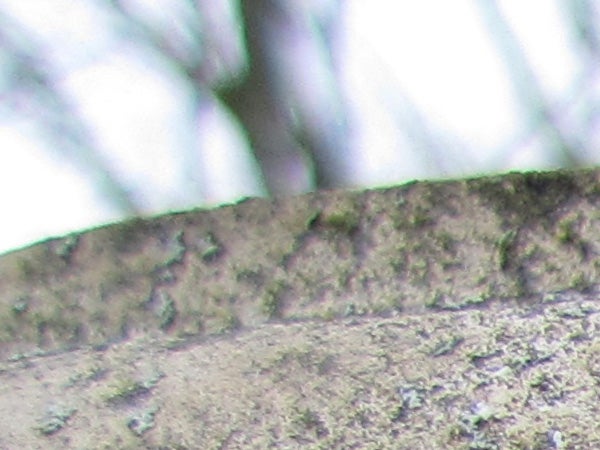
”’Full res crop”’
—-
”’Here are some general test shots taken with the IXUS 130 to give an idea of performance ability when it comes to image quality, dynamic range, colour rendition and the focal range of the respective optics.”’
—-

An extreme wide angle shot at 28mm equivalent to illustrate what the IXUS 130 can pack into frame. Again focus is softening toward the corners, and pixel fringing is visible on the tree branches.
—-
An extreme telephoto shot taken from the same position to show what quality is like at that end of the zoom, when shooting handheld. It’s a little softer than we might have liked and a little flat too – though the adjustment of brightness and contrast in Photoshop would quickly add some much needed visual punch and definition.
—-

On a rather dull day we chose the Vivid setting from amongst the Canon’s ‘My Colors’ menu to help this post box leap out of frame. Having said that, the boost in saturation provided is quite subtle.
—-

A colourful scene at wide angle setting which illustrates both the broad range of tones the IXUS 130 is capable of reproducing as well as the fact that there’s not much in the way of barrel distortion visible in the brick work.
—-
Trusted Score
Score in detail
-
Value 9
-
Image Quality 8
Features
| Camera type | Digital Compact, Digital SLR |
| Megapixels (Megapixel) | 14.1 Megapixel |
| Optical Zoom (Times) | 4x |
| Image Sensor | 14.1 megapixel, 1/2.3 type CCD |
| Optical focal length | Equivalent to 28-112mm in 35mm film terms |
| Shutter speed | 15-1/5000 sec |
| Auto focus | AiAF (Face Detection/9-Point), 1-point AF (fixed to centre) |
| Manual focus | No |
| Max output resolution | 4320x3240 |
| Other resolutions | 3456x2592, 2592x1944, 1600x1200, 640x480, 4320x2432 |
| Focus range | 3cm to infinity |
| Exposure control | P, A |
| Exposure metering | Evaluative, Centre weighted and Spot |
| Exposure compensation | 1/3 EV step, +/- 2EV |
| Image Stabilisation | Optical |
| ISO settings | Auto, 80, 100, 200, 400, 800, 1600 |
| LCD Monitor | 2.7 inch, 230k dots |
| Viewfinder | N/A |
| Flash range | 30cm to 4 metres (wide), 50cm to 2 metres (telephoto) |
| Flash modes | Auto, Manual Flash on/off, Slow Synchro |
| White balance modes | Auto, daylight, cloudy, tungsten, fluorescent, custom |
| Drive modes | Single, continuous, self timer |
| Image formats | JPEG |
| Picture adjustments | Vivid, Neutral, Sepia, Black & White, Film Light Skin, Dark Skin, Vivid RGB, Custom |
| Video (max res/format) | 1280 x 720 at 30fps |
| Movie length | Up to 4GB or 10 minutes in HD mode |
| Self timer | 2, 10 secs |
| Memory card slot | SD, SDHC, SDXC |
| Supplied memory | None |
| Batteries supplied | Lithium ion pack |
| Charger supplied | Yes |
| A/V output | HDMI, standard AV Out |
| Charging/Computer Connection | USB 2.0 |
| HDMI | HDMI |
| AV Out | Yes |
| Manual | Basic printed guide, full manual on CD |
Physical Specifications
| Dimensions Width (Millimeter) | 92.2mm |
| Depth (Millimeter) | 56.1mm |
| Weight (body only) (Kilogram) | 133g including batteries and cardkg |

